From the 1940s on, cricket in St. Mary’s went from strength to strength and a steady stream of players joined the Leinster C.C, In the immediate post-war years the Leinster Club had the good fortune to secure the services of some great coaches viz. George Pope of Derbyshire, Learie Constantine of the West Indies and George Harrison of Glamorgan.
St. Mary’s were allowed to avail of their services. This gave a tremendous impetus to cricket in the school. Anyone who ever came in contact with Learie Constantine could not help being fired with enthusiasm for the game. He must surely rank in the galaxy of the world’s best ten all-rounders of all time. Batting, bowling, fielding and superb all-round sportsmanship. he brought to them all an inimitable artistry, which he ably demonstrated in the several exhibition matches he played in this country. He predicted a great career for Gerry Duffy (who in his book he incorrectly calls Gerry O’Connor!) and Gerry became his worthy disciple.
The 1950s
Fr Frank Barry was elected Chairman of the Leinster Schools Cricket Union in 1952, a well-deserved honour for the work that he had put into raising the standard of cricket in St Mary’s, and consequently in the schools section of the union. He continued the practice begun back in 1945 of inviting well-known cricketers and coaches to help in coaching the boys. We find J. C. Boucher of Phoenix, Ireland’s greatest bowler, in attendance in 1952 when the senior team reached the final.
In 1951-52 the Senior XI reached the final of the Leinster Schools Cup but were narrowly beaten by St Andrew’s. In the first round against Sandford School, Fred Cogley had what is 246 probably a unique performance for a schoolboy, if not for any class of cricketer in Ireland.
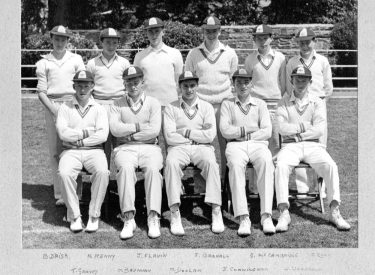
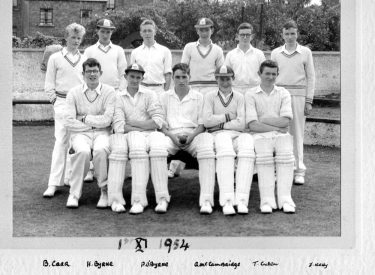
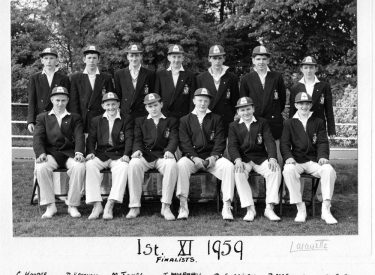
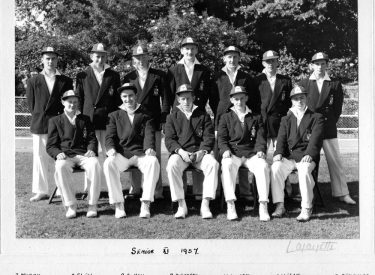
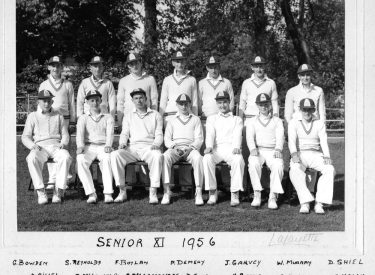
He took 10 wickets in an innings. Belvedere were defeated by 3 wickets in the quarter-final and CUS by 6 wickets in the semi-final. St Andrew’s put on 138 in their first innings, to which St Mary’s could replay with only 99. St Andrew’s then added 95 in their second innings which was matched by St Mary’s, but this left St Andrew’s ahead by 36 runs.
However, the outstanding player of this era was undoubtedly J. Egan, who was the No. 1 bowler on the senior and junior teams while still playing for the under-14s ! He obtained his Leinster lnterpro Cap in 1953, and again in 1954 and 1955. In 1953 he was chosen with John Cunningham on the Leinster Schools team to play the touring Leprechauns. On
August 1, 1955, he was on the Leinster Senior XI with Gerry Duffy, considered St Mary’s greatest cricketer. While Gerry made the headlines with a double century, Joe Egan was not far behind with a bowling analysis of 9 wickets for 75 runs. John Flavin, back again on the staff of St Mary’s as Fr John Flavin, also gained his lnterpro in cricket in 1955. The
junior cup team had the strange experience that season of being unbeaten both before and after the cup campaign, while succumbing in the cup to a Blackrock team they had earlier dismissed comfortably.
The flow of young players from St. Mary’s into club cricket was steady. In speaking of the continuance of cricket in the after-school years, one must take many factors into account. Firstly, the number wanting to play cricket in a serious fashion in the schools is relatively small, as many do not persevere in the necessary technical coaching. The school cricket season in the last term is very short – about five weeks.
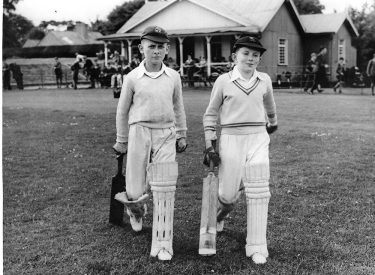
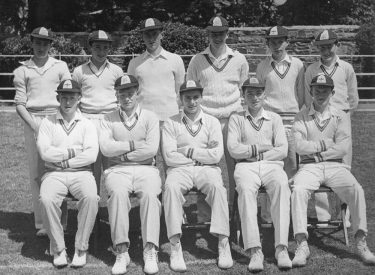
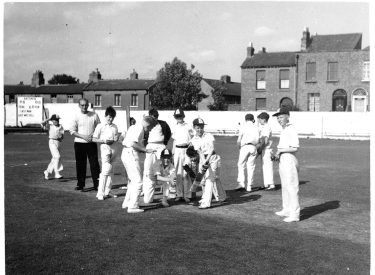
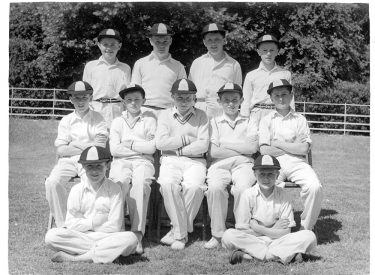
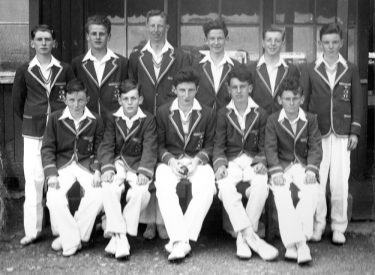
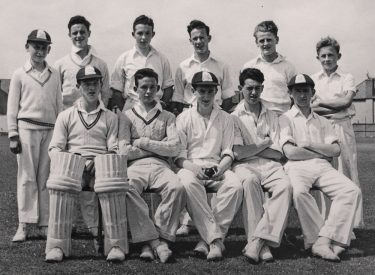
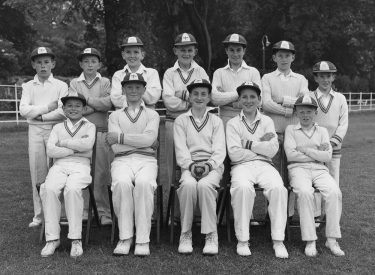
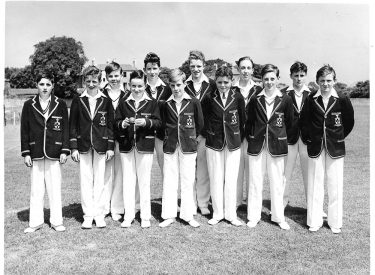
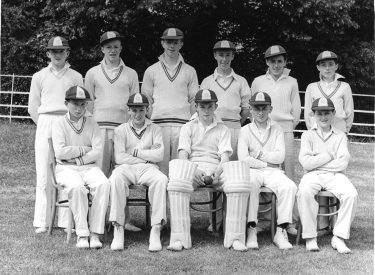
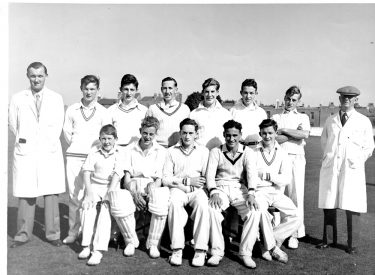
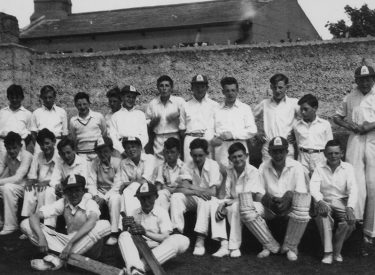
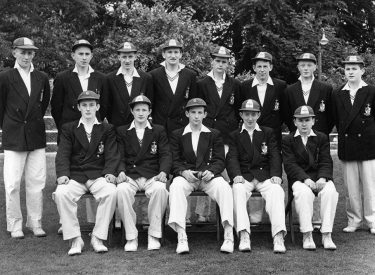
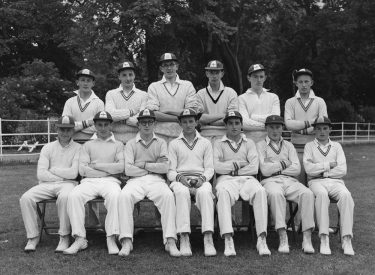
Public examinations at the beginning of June deter many from the game (though this is very often an excuse for wasting time in other non-sporting activities). In the long holidays, some boys take jobs, others go away for long periods, boys often took up permanent employment in those earlier days. All these factors, and many more, militate against persevering with the game at game at club level during the summer season. There was considerable ‘fall-out’ and many good players were lost to the game.
“They did a tremdous job, one could not praise their dedication too much”
Fr. Barry, 1950 on laying the crease in Kennilworth
In early in 1950, after the school acquired Kennilworth Square, the area was steamrolled by a very heavy roller which compacted soil and stones, making it a poor bed for grass seed. That summer, Fr Barry, with Fr George Lahiffe and some of the Prefects, laid down the first cricket crease with the aid of an 18-foot plank. However, he was permitted only the cheapest of grass-seed, perennial rye, and the result was not altogether satisfactory. Still, cricket was begun in Kenilworth the next season, 1951.
With its proximity to the school, and the facilities it provides for rugby, cricket, tennis, basketball and athletics, Kenilworth was a gift from heaven and provides a wonderful arena for such events as the Annual Sports Day and Union Day. It is a most picturesque setting, particularly in the Summer with the trees and shrubs in full leaf, but it is the result of back-breaking effort, mainly by the successive groups of prefects who worked there for many summers, sifting soil, removing stones, filling in hollows, levelling bumps, painting pavilions and repairing them. In the words of Fr Barry: “They did a tremendous job, one could not praise their dedication too much”.
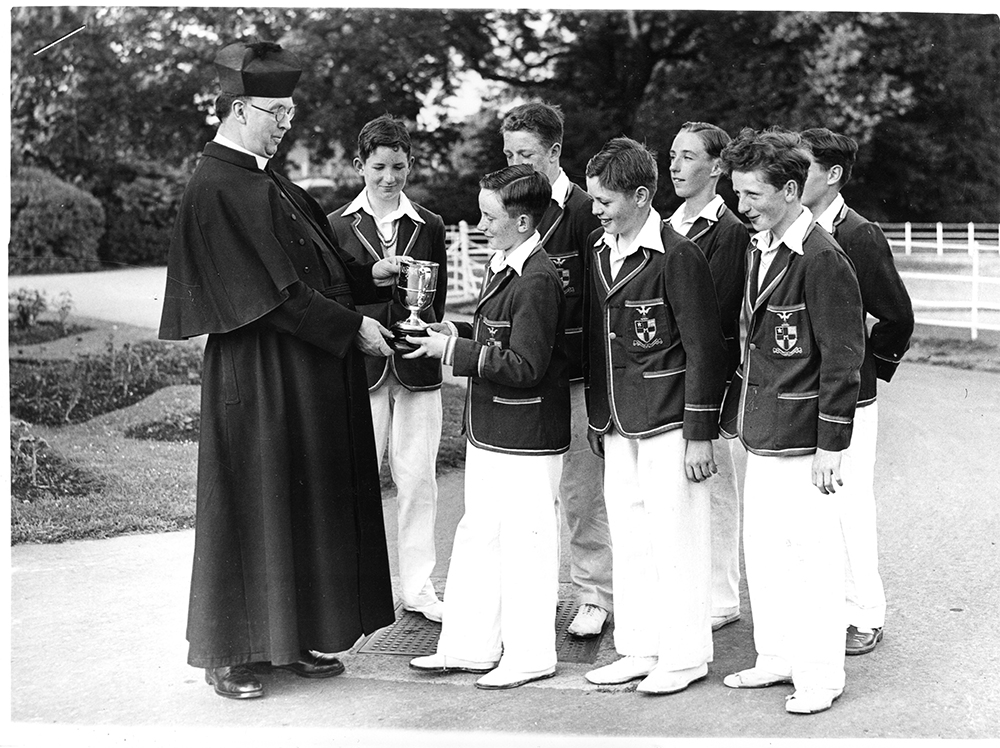
1951 – U 14 Cup Presentation
1960s
1963-64 was not a very successful season for cricket although the senior team had all played the previous year. The first four League games ended in draws and then St Mary’s beat Kings Hospital, Wesley and Sandford before succumbing to High School who contested the final with Blackrock and lost. The Juniors went out of the Cup in the first round to CUS. The U-14s played some good cricket through the season. Although losing to Belvedere early on, they defeated Masonic without loss of a wicket, and Mountjoy. A win over High School would have put St Mary’s into the play-off, but they could only draw.
Gerry Moloney and David Balfe were picked for Leinster in the match against Munster and David got a half century. He was also picked against Ulster. Gerry Moloney was unavailable for that match.
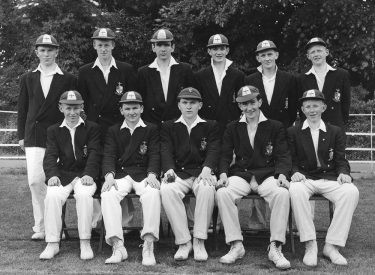
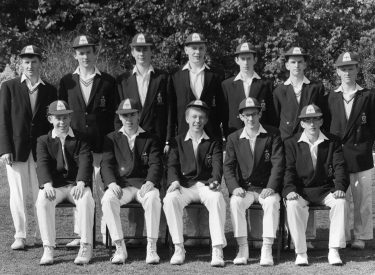
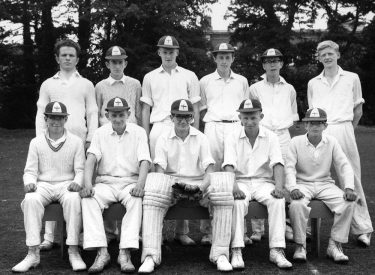
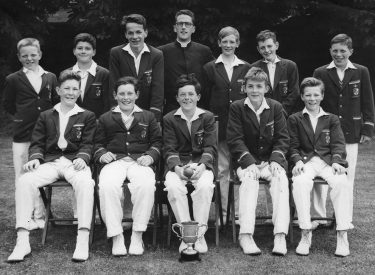
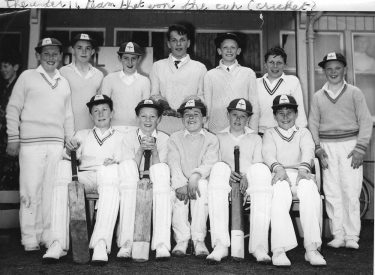
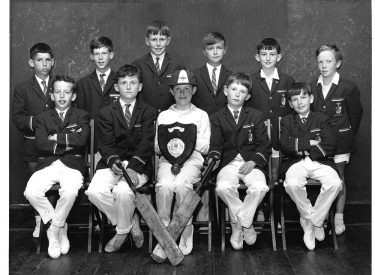
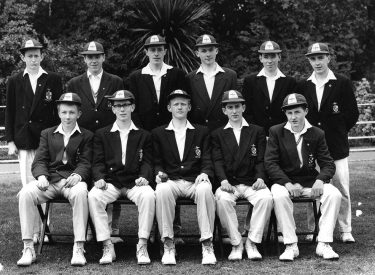
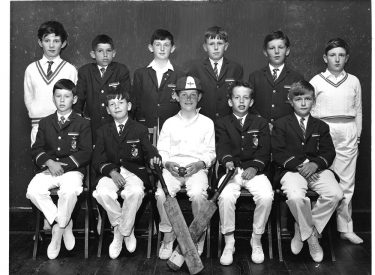
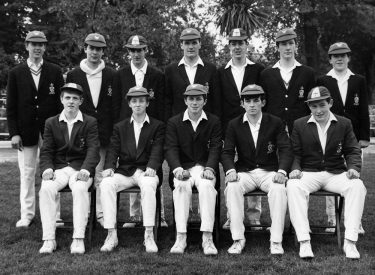
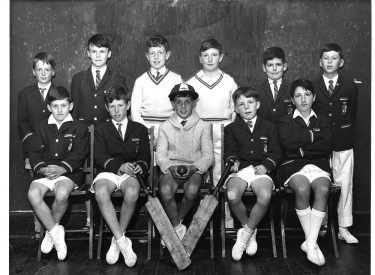
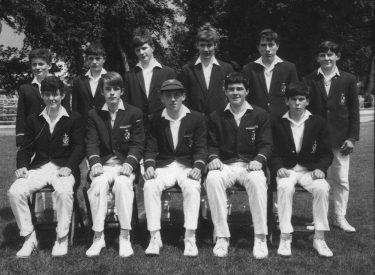
In 1964-65 the Senior team was lacklustre and had a poor enough season. The Juniors did much better, reaching the Cup Final only to be beaten by a good Blackrock team because of poor fielding and weak batting. It was left to the Under-14s to restore gloss to the reputation of St Mary’s at cricket. They did not seem all that good a squad as the season began under the captaincy of Paul Andreucetti, ably assisted by Liam Grissing, but success breeds success and as they won matches they came to believe in themselves. The first Cup match was really a rout.
High School were set 64 to make in 75 minutes. They were all out in less than 30 mins for 19. Masonic nearly put paid to any hope of success when, having made only 34 themselves, they had St Mary’s 14 for 6. Eddie Wigglesworth saved the day, pushing the score on to 32 for 8, and then hitting a lusty six into the shrubbery for a heart-stopping win. In the next match, against Terenure, St Mary’s felt lucky to have made 70, as five of their batsmen had ducks! But as it transpired, the first four Terenure players also had ducks and they could only summon up 49 runs in reply. The final against Gonzaga was keenly contested.
They made a slow 60 all out, and at one stage St Mary’s were 13 for 3. But Liam Grissing made a sparkling 27’and Paul Andreucetti a whirlwind 11 to take them out of danger and 61 was reached with the loss of 5 wickets and the Cup was home once more.
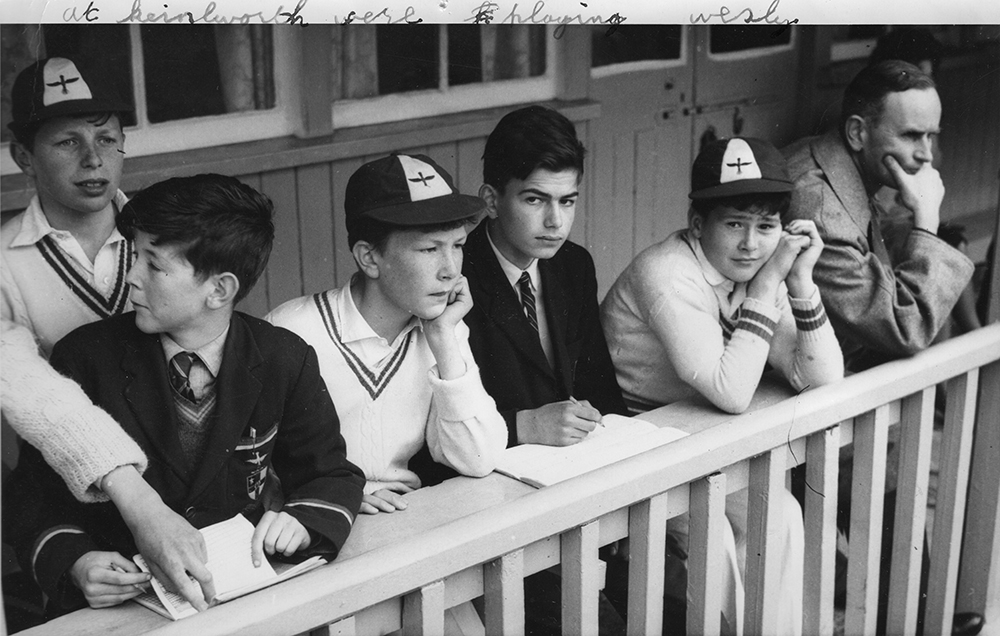
1968 Kennilworth – Andreucetti St. Marys v Wesley College
In 1965-66 that U-14 team were Juniors and looked good prospects for the Cup competition when they reached the semi-final against Blackrock. St Mary’s made 136, but it was only good fielding that stopped Rock at 81. In the Final against High School, St Mary’s put them all out for 82, which was not a great score. However, over-cautious batting put too few runs on the board and when the team’s usual sheet-anchor, Liam Grissing, went cheaply, it seemed all up. Paul Andreucetti came in and hit vigorously for a glorious 29 but it was not enough and St Mary’s were all out for 62. The U-14s were a good side and lost only to two teams, Willow Park and Gonzaga. Unfortunately, these were the two which contested the final of the Cup.
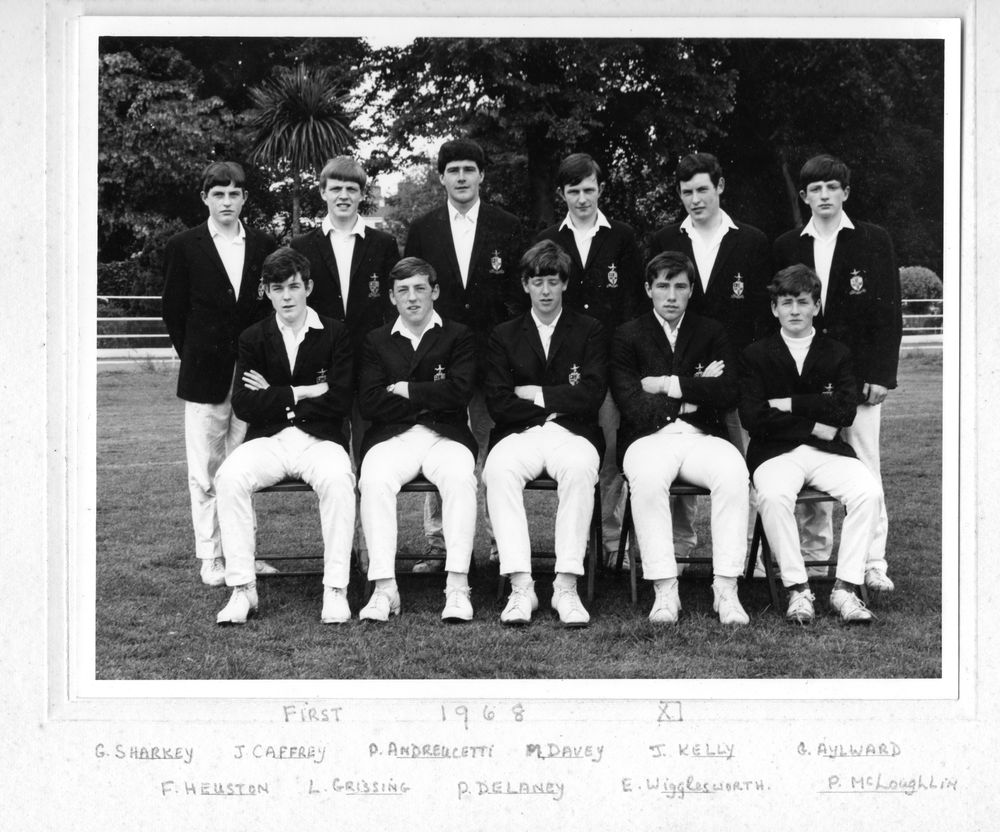
1968 Senior XI
1966-67 will go down in the records, according to Fr Barry, as the wettest cricket season in living memory. Torrents of rain in April and May, heavy skies and cold winds when play was in any way possible. In the League they won against Mountjoy and Gonzaga, had the match with Sandford washed out and lost a match to Blackrock they could have won. The dismal weather permitted the Juniors to play only six matches, winning four, losing one, having one abandoned. In the Cup they played Masonic first scoring 131. Then rain intervened and the match continued 3 WEEKS LATER! Is this a record? In atrocious conditions Masonic could only muster 31 when the match did continue. Fine weather came for the match with Wesley which was won esily enough. It was unfortunate that the semi-final with the eventual cup-winners, Belvedere, took place the day after the school sports. No one was in form and Belvedere ran out easy winners. The 1968-69 season was different in that St Mary’s were unable to field a senior team. But the U-14s had a very successful season, winning 9 and drawing 4 of their 18 matches under Captain Gerry Delaney, who was to go on with success into the senior ranks with Leinster C.C. In the League they defeated Masonic, Wesley, Gonzaga and St Paul’s to earn a place in the final with High School, who were clearly a better team and ran out easy winners.
A feature of cricket during these years was the number of boys from St Mary’s who joined Leinster Cricket Club across the road and played in their underage teams during the Summer. It is a practice which continues to this day.
